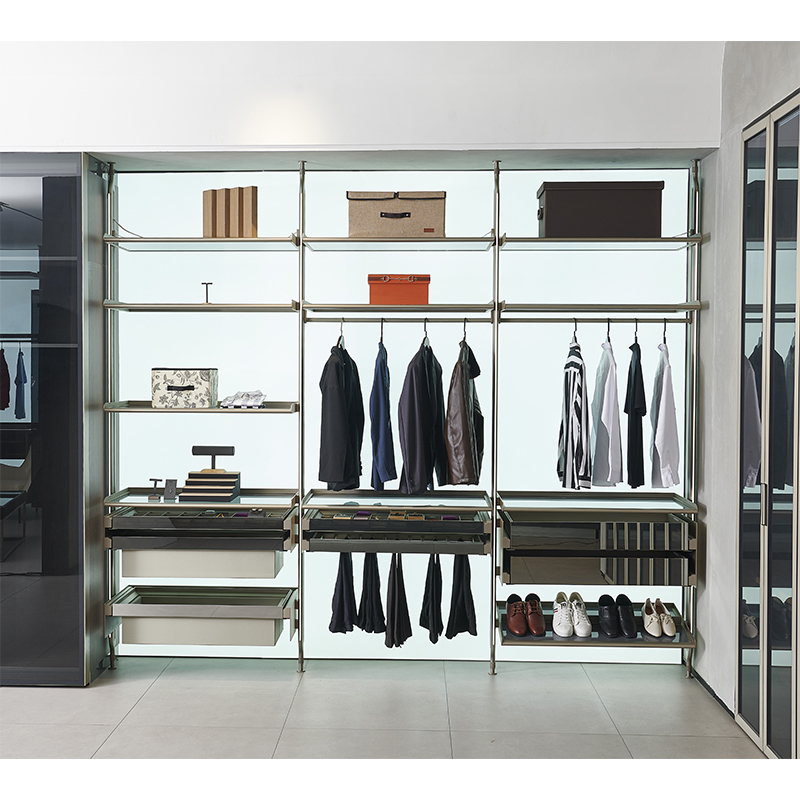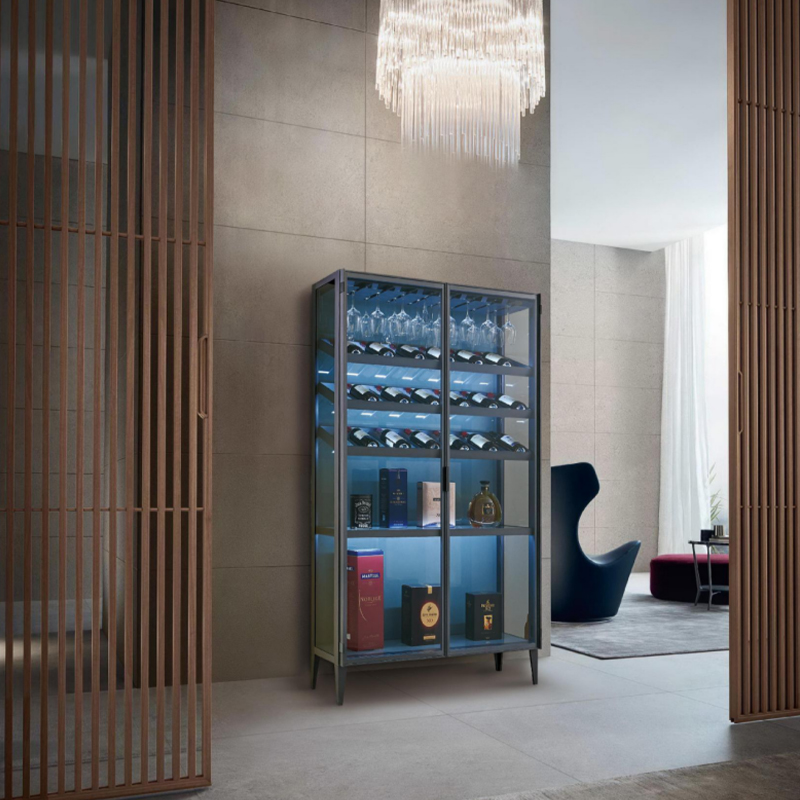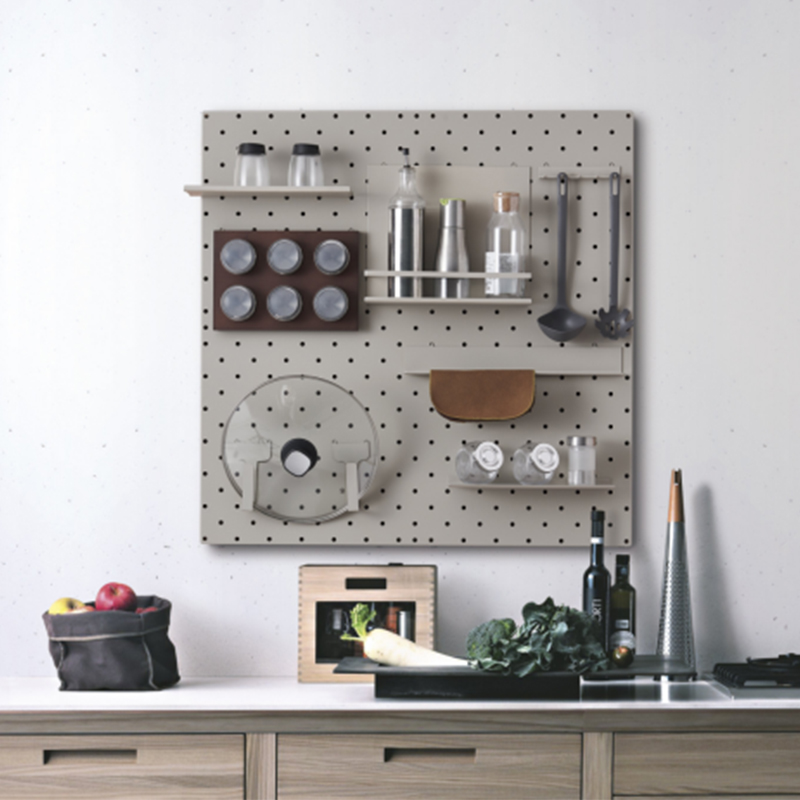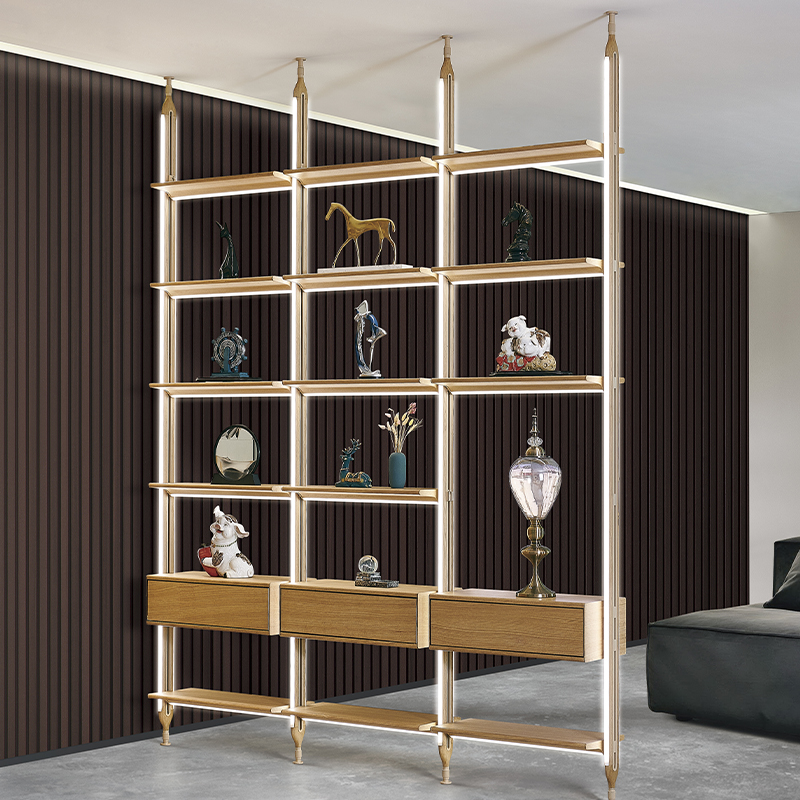How can small apartments achieve a balance of storage, display, and dining functions with a sideboard?
Release Time : 2025-09-22
In modern urban living spaces, spatial planning for small apartments is always a delicate balancing act between functionality and aesthetics. As an essential piece of furniture in the dining area, the sideboard has evolved beyond its traditional storage role, becoming a multifunctional hub for storage, display, and supporting dining activities. For small apartments with limited space, how to make the sideboard simultaneously meet these three core needs without appearing cluttered is key to enhancing the quality of life.
Dining areas in small apartments often connect to the living room or kitchen, or are part of an open-plan layout. Therefore, the selection and placement of the sideboard must consider both visual openness and practical efficiency. A bulky or wall-to-wall design can create a cramped feeling, while a minimalist design may lack sufficient storage. The ideal solution is a layered, compartmentalized design, combining closed cabinets with open shelves. The closed compartments hide everyday items like tableware, napkins, and condiments to maintain a tidy appearance; the open shelves display decorative items, books, or plants, creating visual interest. This combination of open and closed storage maximizes capacity while avoiding a cluttered look.
In terms of functionality, the height and depth of the sideboard should harmonize with the dining table, avoiding obstructing views or hindering movement. The countertop is particularly valuable; it serves as a display area and can also function as a temporary prep area or an extension of the dining space. Some clever designs incorporate built-in power outlets or USB ports, allowing for easy use of small appliances like coffee makers or kettles, making the sideboard a center for light dining. During gatherings, it can serve as a temporary storage area for dishes, reducing kitchen clutter; and on a daily basis, it can be used for a morning coffee or a quiet evening read.
To further optimize space utilization, more and more small-apartment sideboards are incorporating flexible, adjustable internal structures. The height of the shelves can be adjusted to suit different sizes of tableware or storage boxes; drawers are equipped with dividers for organizing cutlery, napkins, or tea bags; and some designs even feature hooks or thin storage compartments on the inside of the cabinet doors, maximizing every inch of space. This meticulous internal design allows a small piece of furniture to offer a wealth of functionality, truly embodying the wisdom of "small but exquisite" living.
Visually, the choice of materials and colors is particularly important for a sideboard in a small space. Light colors or reflective surfaces enhance brightness, while mirrored back panels or glass doors create a visual extension, making the dining area appear larger. Appropriate lighting, such as LED strips in open shelves, not only highlights the quality of displayed items but also creates a warm atmosphere at night, transforming the sideboard from mere furniture into a tool for expressing emotions.
Furthermore, the interplay between the sideboard and surrounding furniture is crucial. It can complement the dining table in terms of material or color, enhancing the overall aesthetic; it can also create visual layers with wall decorations, carpets, or curtains, avoiding a sense of isolation. In very small apartments, the sideboard can even be integrated with a built-in bench, bookshelf, or bar, achieving multi-functionality and maximizing space utilization.
The role of a sideboard in a small apartment has evolved beyond a passive storage unit; it now actively contributes to creating a vibrant living environment. It silently manages everyday essentials, elegantly displays personal style, and flexibly supports dining needs. Through thoughtful layout, flexible structure, and refined design, the sideboard harmoniously combines storage, display, and dining functions in a limited space, becoming a vital element for enhancing the quality of life in small homes. It carries not only objects, but also people's aspirations for a fulfilling everyday life.
Dining areas in small apartments often connect to the living room or kitchen, or are part of an open-plan layout. Therefore, the selection and placement of the sideboard must consider both visual openness and practical efficiency. A bulky or wall-to-wall design can create a cramped feeling, while a minimalist design may lack sufficient storage. The ideal solution is a layered, compartmentalized design, combining closed cabinets with open shelves. The closed compartments hide everyday items like tableware, napkins, and condiments to maintain a tidy appearance; the open shelves display decorative items, books, or plants, creating visual interest. This combination of open and closed storage maximizes capacity while avoiding a cluttered look.
In terms of functionality, the height and depth of the sideboard should harmonize with the dining table, avoiding obstructing views or hindering movement. The countertop is particularly valuable; it serves as a display area and can also function as a temporary prep area or an extension of the dining space. Some clever designs incorporate built-in power outlets or USB ports, allowing for easy use of small appliances like coffee makers or kettles, making the sideboard a center for light dining. During gatherings, it can serve as a temporary storage area for dishes, reducing kitchen clutter; and on a daily basis, it can be used for a morning coffee or a quiet evening read.
To further optimize space utilization, more and more small-apartment sideboards are incorporating flexible, adjustable internal structures. The height of the shelves can be adjusted to suit different sizes of tableware or storage boxes; drawers are equipped with dividers for organizing cutlery, napkins, or tea bags; and some designs even feature hooks or thin storage compartments on the inside of the cabinet doors, maximizing every inch of space. This meticulous internal design allows a small piece of furniture to offer a wealth of functionality, truly embodying the wisdom of "small but exquisite" living.
Visually, the choice of materials and colors is particularly important for a sideboard in a small space. Light colors or reflective surfaces enhance brightness, while mirrored back panels or glass doors create a visual extension, making the dining area appear larger. Appropriate lighting, such as LED strips in open shelves, not only highlights the quality of displayed items but also creates a warm atmosphere at night, transforming the sideboard from mere furniture into a tool for expressing emotions.
Furthermore, the interplay between the sideboard and surrounding furniture is crucial. It can complement the dining table in terms of material or color, enhancing the overall aesthetic; it can also create visual layers with wall decorations, carpets, or curtains, avoiding a sense of isolation. In very small apartments, the sideboard can even be integrated with a built-in bench, bookshelf, or bar, achieving multi-functionality and maximizing space utilization.
The role of a sideboard in a small apartment has evolved beyond a passive storage unit; it now actively contributes to creating a vibrant living environment. It silently manages everyday essentials, elegantly displays personal style, and flexibly supports dining needs. Through thoughtful layout, flexible structure, and refined design, the sideboard harmoniously combines storage, display, and dining functions in a limited space, becoming a vital element for enhancing the quality of life in small homes. It carries not only objects, but also people's aspirations for a fulfilling everyday life.








